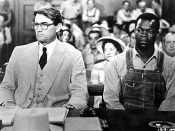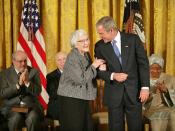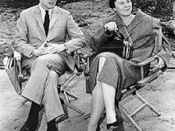Throughout the history of mankind racism has been a dominating factor in society, building barriers of discrimination and prejudice against those of differentiating races. Dating back to the 17th century, racism towards African Americans began through the form of slavery. Despite George Washington's abolition of slavery in 1863, racism still continued to haunt "Negroes" in their day to day lives. Two authors, Harper Lee and John Howard Griffin, recognized this injustice towards African Americans and were inspired to make a difference through literature.
Published in 1960, Harper Lee's To Kill a Mockingbird gave readers a small glimpse into South American life during the 1930's. The setting of the book, Maycomb County, depicted real issues such as poverty, uneducated children and racism. These problems were illustrated through the day to day lives of the Finch family who invited poverty stricken Walter Cunningham to lunch [pg.23], learned of the uneducated and vulgar Burris Ewell [pg.26]
and fought against the racist Bob Ewell in Tom Robinson's trial [chapter 17]. Through Atticus' battle with the Ewell's in court, Lee exposed the racist views that existed in the Judicial Courts and public throughout the 19th century. In Tom's trial Atticus built substantiating evidence against the Ewells, flat out refuting Mayella's accusation of being raped. ie. Tom's paralyzed left arm and Mayella's blackened right eye [pg.187], Bob Ewells left handedness [pg.177] and Mayella's lack of medical documentation [pg.167]. These facts indicated Tom's innocence yet the jury disregarded them, choosing to believe the false testimony of Mayella over the overwhelming evidence. This trial mirrored real life racism throughout the 60's and left readers deeply affected.
A year after the publication of To Kill a Mockingbird John Howard Griffin published Black Like Me. In the book John transformed himself into a Negro and documented his experiences...


